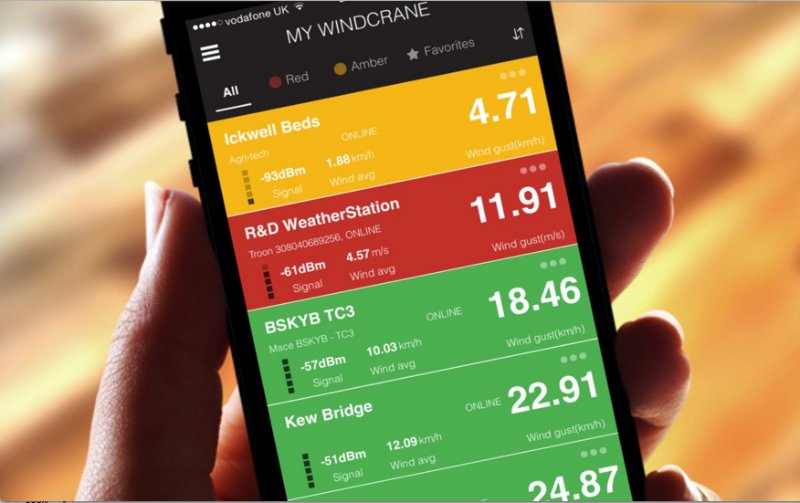The Simple Cell and Autonomous Analytics Software: Scientists have discovered that the “simple cell” really isn’t that simple at all.
A post from catholicstrength.com entitled, “Cellular Theology: The Mysticism of the Life-giving Cell,” states this:
“…we have the amazing discoveries of microbiology that even a simple cell (since it contains information encoding DNA) is a staggering compendium of directions and instructions. If you go on the internet, your research will show that a simple cell is an amazingly complex molecular machine.” Cells function, or perhaps better stated, perform their function autonomously. Today, companies like Modern Analytics are developing and distributing software that performs analytics, namely those of the predictive and prescriptive variety, autonomously. This enables a single data scientist to do the work of dozens of data scientists. The idea isn’t to replace their role, but to allow them to do more creative things and to flourish relative to working with leadership and domain experts. This changes everything.
Just as the simple cell has that staggering compendium of directions and instructions, so does autonomous analytics software. The grueling, tedious work of the data scientist can be learned by a machine (hence the term “machine learning”). Within the link to Wikipedia you can read that machine learning is a “field of study that gives computers the ability to learn without being explicitly programmed.” Just think about how this alone changes things so much. Let me take you down a road of ideas, thoughts, insights, and concepts that will enlighten you by creating a picture, an array of opportunities that autonomous analytics can generate.

Information Overload
The amount of information that’s being created is elevating exponentially. It’s almost impossible to wrap your head around it. Rapid advancement in data storage and data processing technology is enabling massive collection and archiving of information.
To show you how steep the curve is I’ve captured this slide from an Amazon Web Services webinar series.

Big Data Disappointments and the Data Analytics Roadmap
The “Big Data” phenomenon is creating the opportunity to acquire nearly unlimited insights. Analytics or “data science” can be used to predict what will happen and explain why it will. But many challenges to reaping benefits from analytics yet remain. One main issue: Data is siloed, disjointed, or disparate. Databases are not aggregated. Lots of bureaucracy and a lack of foresight can prevent different parts or divisions of organizations from sharing information. Not only has the volume of data skyrocketed, but the places where it’s stored and the methods of collecting it have also expanded profoundly. A great blog post entitled, “Siloed Data is Killing Your Business Analytics,” states that small companies have on average “14.3 applications” and at the enterprise level “just under 500.” So the question of the day is this:
Are business leaders getting value out of all this data?
This depends on what company you’re running. An article from Forbes stated this harsh reality, “Just 27% of C-level executives think their company makes ‘highly effective’ use of data, while about a third (32%) say access to mountains of information has actually ‘made things worse.'” One of the benefits of partnering with a software and services organization like the aforementioned Modern Analytics is the fact that they’ll work with you to build a data analytics roadmap. Expert consultants work with your staff, covering the breadth of your business, to put together an approach that bridges data to measurable results.
When I worked at General Electric I learned that if something is important, you measure it. And if you can’t measure it how can you tell if you’re improving? Measuring how you’re benefiting from data analytics becomes more and more important as each day passes. This requires a well-coordinated effort. Taking the journey of completing the analytics roadmap process includes setting up a plan to measure the value of analytics, one of its many benefits.
Once you are all on the same page, once you have a robust strategy in place, a roadmap to your data analytics success, great things can start happening. It’s as simple as having a way to get from point A to point B. To get from having no strategy (or a poorly devised strategy) to possessing a robust strategy that will drive sustained success.

The competitors are fierce. They’ll be doing all they can to be more effective at acquiring and disseminating actionable data. Whether you consider it creating distance between you and your competition or just keeping pace, you must figure out how to make your approach to data and analytics an asset as opposed to a liability.
In a previous post, Predictive Analytics Brings Much-Needed Precision, I discussed how data holds the answers relative to buying propensity. Imagine being able to see what prospects have the highest likelihood to buy your products or services. Companies I talk with tell me that they’re wanting to be more targeted in the way they sell and market.

Predictive analytics gives you powerful information that will increase your precision. This impacts sales velocity, the time it takes for a new lead to become a closed deal. It will keep you away from the customers that will say “no” or worse yet, the ones who will string your salespeople along, sitting idle, with no movement whatsoever within your sales pipeline. Salespeople have a tendency to hang on too long to potential deals. The key is to use analytics to point them to the deals that they’ll close in a reasonable amount of time. Think of the costs and time lost when you bark up the “wrong customer” tree.
Autonomous Analytics, the “Great Enabler”
Even though we’re living in the heart of the information or digital age, companies are still wasting time reaching out to people who will never buy. Sure, on the surface, they look like great prospects with huge sales revenue upside, nice opportunities to enlarge your customer footprint, and a logo to add to your customer list that will really impress. That means nothing if your odds of selling to them are slim to none and leaning more towards none. Autonomous analytics changes that. With this capability you can prioritize and channel your sales and marketing energy to the prospects that are thirty, forty, or fifty times more likely to become one of your customers.
However, it’s the autonomous nature that really makes this capability revolutionary. Instead of data scientists producing a handful of predictive models per year, autonomous analytics enables you to perform analytics on practically everything. One company, a multinational technology and consulting company, used the power of autonomous analytics and were able to produce close to 1,000 predictive models in a year’s time and perform advanced analytics with only a single data scientist managing the program. To accomplish the same work without the software you’d need to hire a staggering 200 data scientists! Exponentially more models and significantly lower costs. Autonomous analytics changes everything by allowing you to ask hundreds of more questions. The amount of information and insights gained was eye popping. It would be like comparing the information you can get from a $100 telescope to the Hubble Telescope (and getting the Hubble for a dollar).

This means more and more business-critical answers over time. Answers to things that fundamentally change the balance sheet, that profoundly impact your performance results. Just think how exciting it will be to deliver the great news with your fellow leaders and to the board, your investors, and your shareholders…
Now… Let’s talk about some concepts that will really pique your curiosity and leave you completely intrigued, determined to pursue autonomous analytics. First, I’ll explain how analytics is used (done autonomously of course) to predict cross sell opportunities. Let’s use a product of my past to illustrate… patient monitoring equipment. A large company that sells medical capital equipment wants to predict cross sell opportunities. They want to see what customers have a significantly higher probability to buy their blood pressure cuffs in addition to their vital signs monitors. With the data they already have (imagine their analytics road map helped them get organized and get their data in shape), once the data modeling process is complete, the analytics can provide many strategically important insights and answers. In this case, it’s how (e.g. what white paper will work) and to whom they’re marketing and selling (the best prospects). This is incremental business, not the business they would have won anyway on the unaltered course. The true value created through analytics for this hypothetical scenario could be, for example, $45M in new sales for the company’s disposable and semi-disposable blood pressure cuff business. But if it weren’t for autonomous analytics this may have never been discovered because data science resources are commonly used for only bigger ticket items or the business problems that involve the most money on the table.

It should be stated that there’s another value proposition associated with this scenario. It’s “pull-through sales.” In our hypothetical scenario it would be predicting the amount of blood pressure cuffs they needed to sell in order to increase capital equipment sales. This ability would put anyone in a pretty strong position. It is yet another powerful tool in your autonomous analytics tool belt.
Next, I’ll share a scenario to show how autonomous analytics changes everything relative to upsell opportunities. Let’s use a company and a product that everyone and their mother has heard about, Apple and the iPhone. With predictive analytics you could predict what customers would have a higher likelihood to be upsold. An example might be the iPhone 7 to the iPhone 7 Plus. Perhaps you even go further and do prescriptive analytics which reveals what do about the fact that the next-generation A10 processors is what will compel many people to buy the new smartphone. The prescription, or the right thing to do, is to market the new iPhone to these specific customers, and market to them in a certain, particular, and successful way. Without autonomous analytics Apple or any other company might skip the predictive and prescriptive model. Businesses have to choose their analytics battles (I submit to you this probably isn’t one that Apple would skip). But with autonomous analytics every product, every market, every customer type, every account type, every SKU, every product development opportunity, and a whole lot more can be in scope, all the time.

Check out techradar’s article, “iPhone 7 release date, news and rumors.”
The key: Autonomous analytics frees up a company to do analytics on anything and practically everything. The software automatically, autonomously builds a semi-exhaustive list of models that could impact your business significantly. No more do you have to say something like, “We have a finite number of resources,” or “We only have 5 data scientists and there’s only so much they can do.” With autonomous analytics you can gain better insights and understanding of every aspect or component of your business. Use it to know to whom you should sell, what products to produce, what customers will be successfully retained, what projects will yield the most contribution margin, and so much more. You’ll be able to honestly say that autonomous analytics changes everything.
Connectors, IoT, and Super Intelligence
A deep, but all-important concept to understand is that taking the journey of developing an analytics roadmap and diving into autonomous analytics will result in an intersection with where all technology is headed. The types or phases of analytics are descriptive, predictive, and prescriptive. Descriptive statistics simply tells you about or summarizes your data. Predictive analytics tells you what might happen if things continue on the current course and speed. Prescriptive analytics tells you what to do about it. With autonomous analytics software connectors are built between it and some or all of your databases. Because of this you’re able to see how changes to all the variables (the data) are affecting the predictions and the prescriptions. It’s the constant, continual updating of information and the analytics being performed against it that will help you to run your business smarter. Today, data scientists take a lot of time to build predictive models. But don’t just take my word for it… See what a data scientist has to say about this himself…
Abe Burnett, Data Scientist: “In my experience, building robust predictive models takes more time then the business would like–always. The struggle is that most people think of data science as basically modern magic. You hire a couple data scientists (or Credit Risk Analysts/Modelers–as we call them in finance) and they wave their magic wands over a pile of data for a little while and voilà, a highly predictive model. Nothing could be further from the truth. In our space, with the data we have available, building a decent model seems to require at least 4 months. And even that much time means that we don’t get to consider some options, try some things, optimize some things, etc. There’s just a lot that can be done to get better results, but you’ll often have stakeholders tell you that they’d rather have a less predictive model faster, than a more predictive model slower.”
Read Abe’s comment and others here.
With autonomous analytics you can have your cake and eat it too… Incredibly predictive models (any and all helpful models, you decide what to take action on and when based on the needs of your business) built in a matter of a few days, not months.
Whether it’s talking to futurists, analytics software CEOs, or just reading what other authors or bloggers like myself are writing, it’s evident that the proliferation of the Internet of Things (IoT) is just slightly less certain than the sun coming up tomorrow. This will mean massive amounts of new data that can be used to solve all kinds of problems. It will be critical to have data feeding into an analytics engine(s) that delivers actionable insights leading to mission-critical course corrections. Here’s an analogy: Think of how much analytical power it would take to travel safely at light speed across the universe. There are revolutionary, life-altering consequences that will impact the entire spectrum of scientific disciplines and industries; medicine, mining, and meteorology just to name a few.

Image source: tellit2market.com
We can summarize the impact of having autonomous, well-coordinated data collection, modeling, analytics, and archival like this: It’s the condition required to rapidly acquire super intelligence that businesses need to get ahead or to even stay in the game. With the rate at which technology is advancing you cannot afford to put off discovery of these ideas and concepts. The innovators and early adopters are going to have such a competitive edge over others that it may be impossible for the latter to close the divide. I’ve made it clear that autonomous analytics changes everything. Now you must decide if or how you’ll be part of these inevitable changes.
-30-
Article by channel:
Everything you need to know about Digital Transformation
The best articles, news and events direct to your inbox






